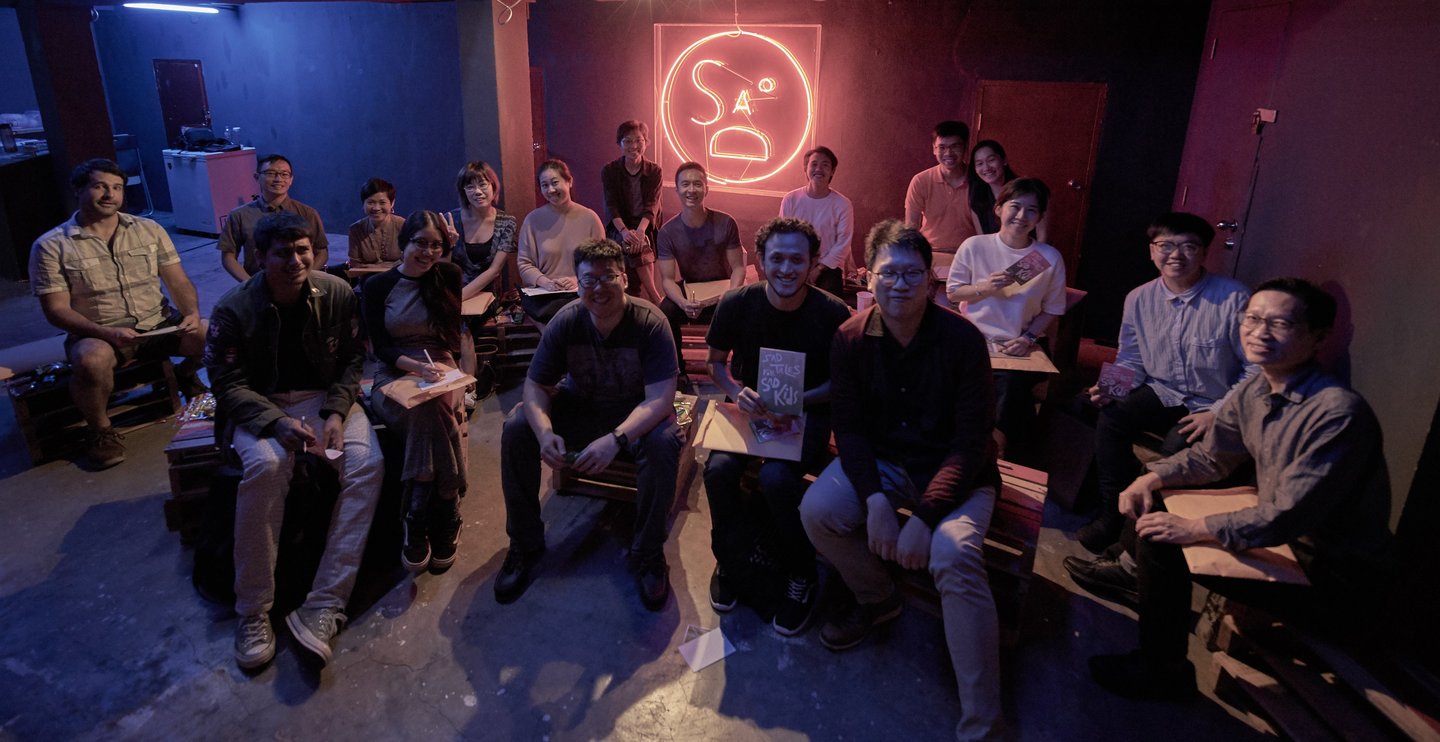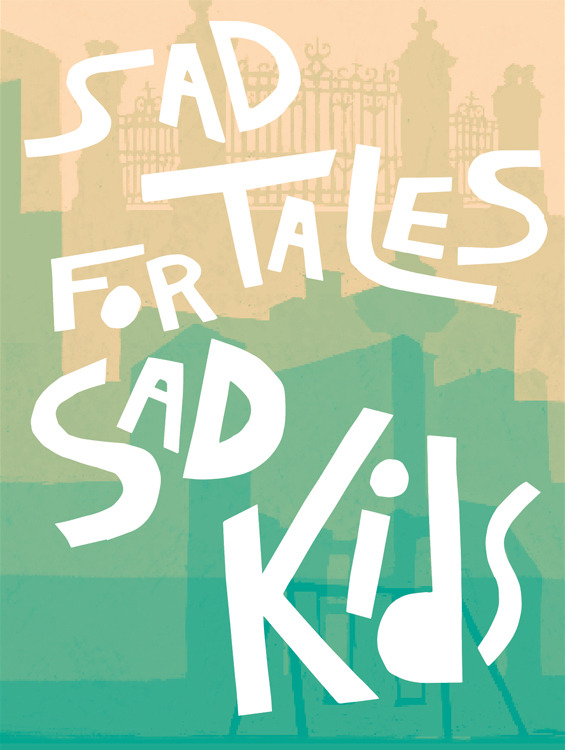

An evening of conversations and readings on public space.
SAD TALES FOR SAD KIDS
A Literary Event
20 December 2019
SAD Bar, The Substation
Daryl Li
DESIGN
Maddison Colvin
ACTIVITY
Yang Yang
Nicholas Cheng
EVENT PHOTOGRAPHS
Lai Hwa Sen
VENUE SUPPORT
The Substation
SPECIAL THANKS
Uzair Daud
Chua Wan Yi
Cho Chang Yin
Debbie Ding
Ng Huiying
Tse Hao Guang
Sad Tales.
On 20 December 2019, I had the opportunity to present my writing at the Substation in an event that was to focus on ideas of public space. Initially, I conceptualised it as a straightforward literary reading event featuring six brief excerpts from my work, with interactive elements that served to break up the monotony. However, as I continued to develop the concept, I came to see it as a cohesive presentation, one that sketched a broader meaning within its disconnections and empty spaces.
Helped by the intimate space of the SAD Bar and the cosily sized group of attendees, it became an attempt at what I thought of as a “performed essay”, a text completed not only with the words, realisable only within a shared space and moment. Performance in literature has long intrigued me, not only in the sense of ironic, self-aware narrators, but in ideas of active participation, community, and transience. I hope that SAD Tales for Sad Kids was a first step in a continued investigation of these ideas.
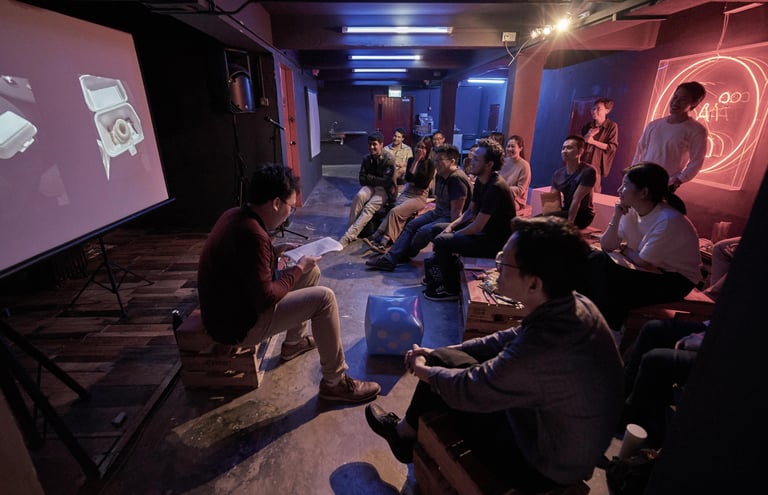


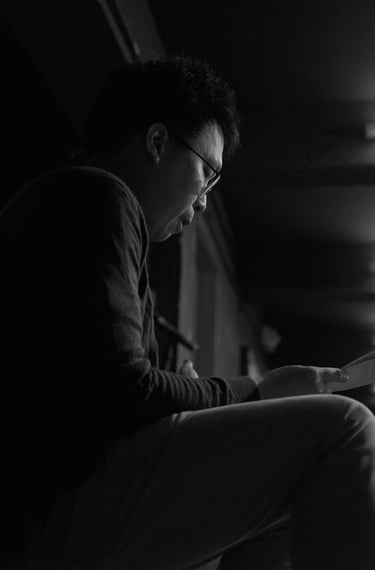
From the Booklet.
I can’t really say what my writing is about. In my fiction, I write about fake writers and fantastical events. None of it is very good. In my non-fiction, I mine my own past for embarrassing anecdotes, tales of failure, stories of people living and dying, and steer these towards ideas that I can’t quite figure out. I write about memory, and love, and death, and failure. I write about movies and music and paintings. I write about the stories we tell ourselves.
I don’t really know what my writing is about, but it certainly isn’t public space.
When the thought of creating SAD Tales for Sad Kids first came about, I was daunted. How could literature really home in on issues of public space? Did my literature have anything worth saying about it? Nevertheless, I developed the idea with a kind of blind faith. The further I went along, the more public space seemed to be the perfect lens, a broadly accommodating way of thinking about my thematic obsessions.
Writing has always been for me a deeply internal process, but even so, the work has an external destination. That is, all writing necessarily takes place solitarily, interiorly, but is simultaneously an attempt to reach outwards, to bridge ourselves with others or the world. Yet, isn’t this also the premise of all public space? It begins in self-interest, but should ultimately be about connecting and sharing with the other.
SAD Tales for Sad Kids is a more material way of drawing out that connection. It is my first attempt at bringing my work into some kind of public space. It is a performance, and in aspects, it corresponds to how we experience both public space and literature. We perform, we age, we remember, we forget, we are injured, we are scarred.
No matter how insular or insulated the writing process, all literature ultimately belongs to an unknowable other, compelling dialogue. Literature, like public space, forces us into the encounter with the other, making connections, beginning conversations.
What is the shape of our public spaces? How is our experience of public space shaped, regulated, transformed, defined?
SAD Tales for Sad Kids is an evening of conversation framed by literary readings that invites you to consider our experience of public space in Singapore, across themes of memory, trauma, development, and chance encounters.
Design.
Maddison Colvin is an interdisciplinary artist and designer residing in Eugene, OR (USA). She earned BA from Whitworth University in 2008 and an MFA from Brigham Young University in 2013. In 2020 she will be an Eliza Moore Fellow at Oak Springs Garden Foundation in Upperville, VA. She currently works as a graphic designer and teaches art and design at Linn-Benton Community College. Her studio work focuses on themes of ecology, built environment, and communal knowledge - one body of work consists of a systematic documentation of churches in London, while another catalogs the specificities of gardens created by artists. As a design project, SAD Tales challenged her to illustrate a place she had never been; forming images from memories heard secondhand. The resultant hazy silhouettes make up the interior and cover illustrations of the booklet as well as the event’s promotional materials.

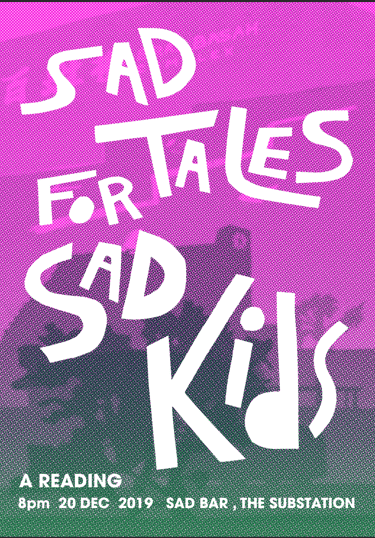
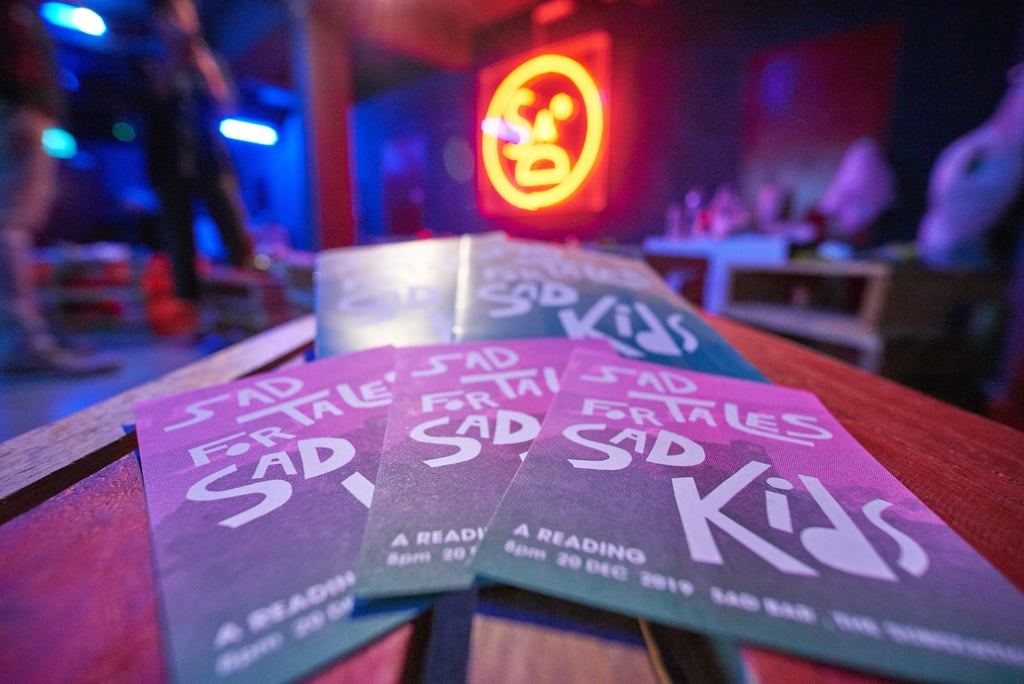

Maddison Colvin.

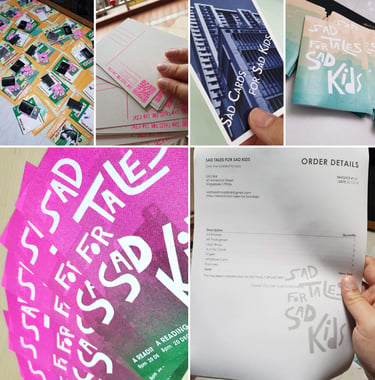
Mementoes.
Taking place over two hours, the event was divided into six segments, with each featuring a short reading and discussion segment that described a specific aspect of public space while developing an overall picture of the theme. Each participant was given an envelope containing a booklet, cards used for the activity, and items—dubbed “mementoes”—that corresponded to each segment.
Activity.
Working with Daryl and Nicholas was a humbling experience. As a non-Singaporean and non-professional artist, it was very challenging for me to design the cards used in the game session. Daryl and Nicholas shared their personal experiences with different places and spaces in Singapore. Hearing their experiences also allowed me to learn more about how iconic buildings and public spaces in Singapore have evolved over time. Without their help, it would have been very difficult to turn ideas into these designs. Designing the game with Nicholas also made me think about how to translate heavy topics such as progress and memories of urban spaces into playful experiences.


Yang Yang.

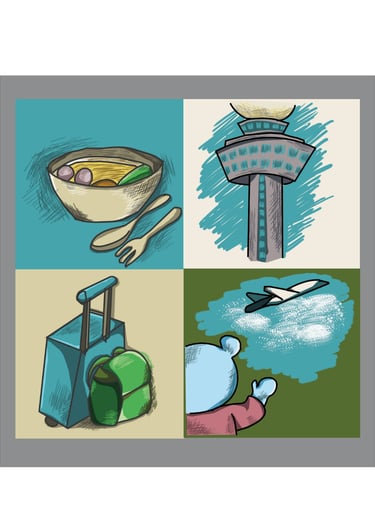

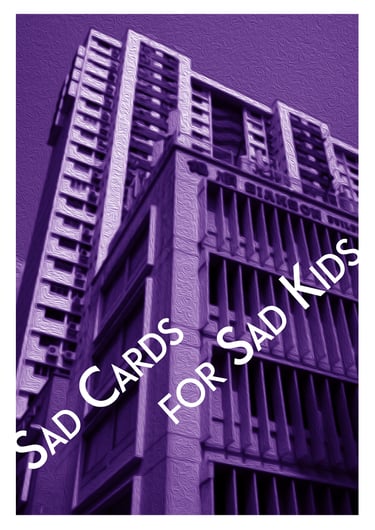
SAD Tales for Sad Kids was a fun, refreshing take on the meaning of public places in Singapore, and many memories, feelings and impressions were evoked through the different explored themes of the event. Described as a type of “performed literature” by Daryl, it was certainly a treat for the eyes, mind, and soul, as the participants were taken on an emotional ride through time and space in Singapore's history. Having to create a short activity as part of the event, I found myself getting attached to it and had a great time working with my co-designer and artist, Yang Yang.
Nicholas Cheng.
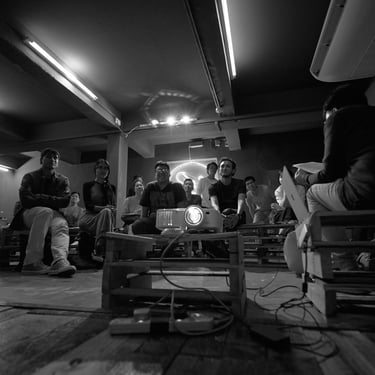
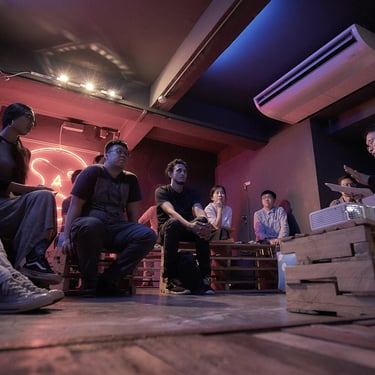


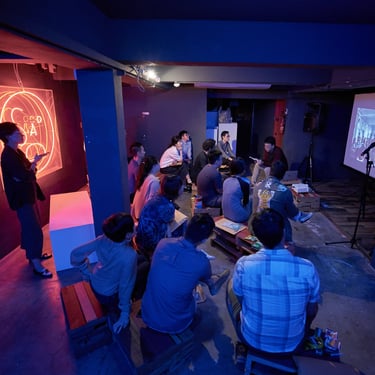

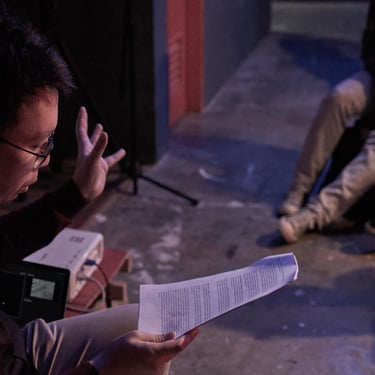
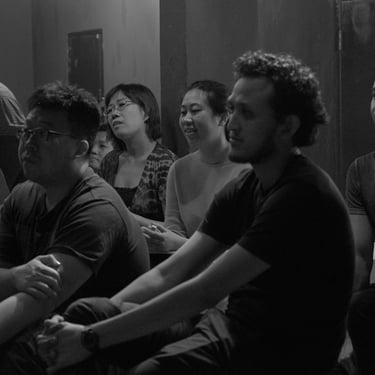
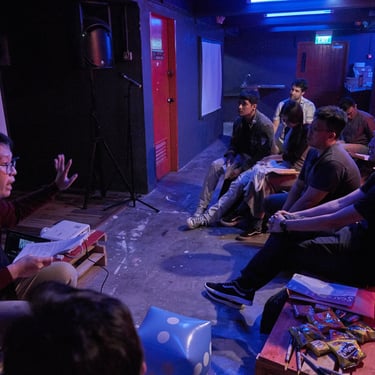

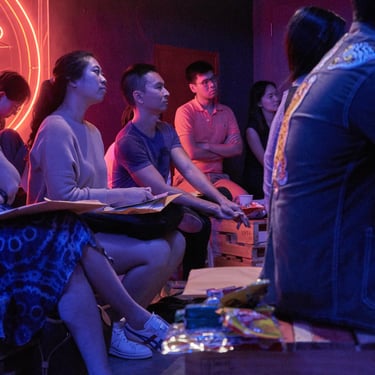
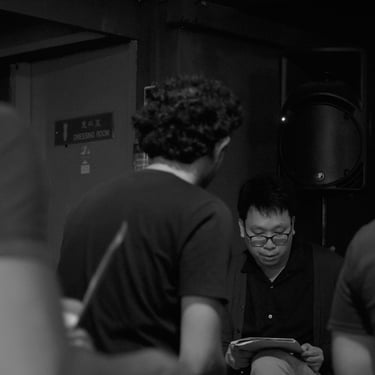

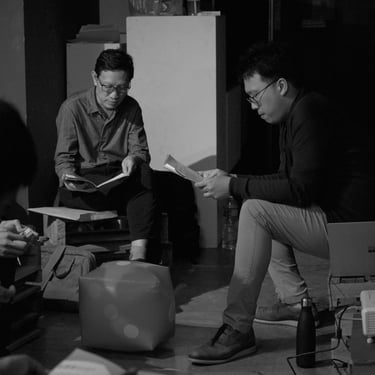

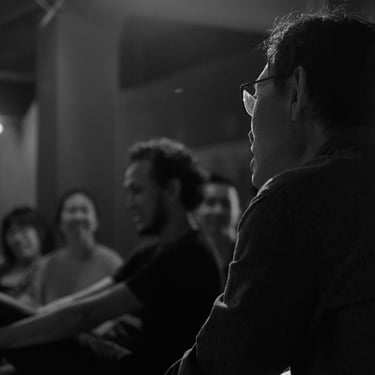
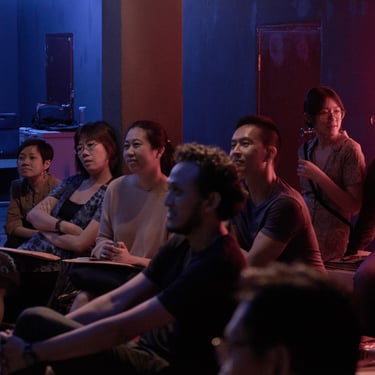
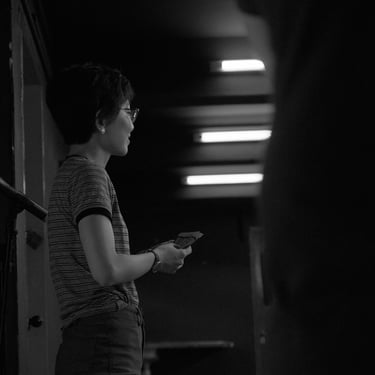

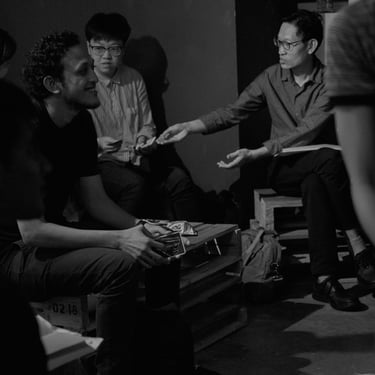

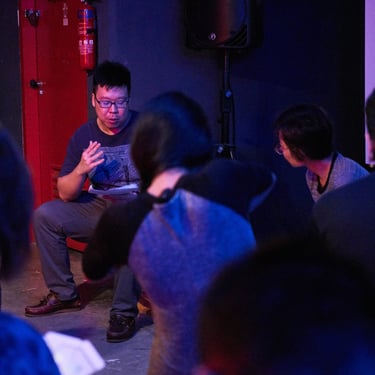
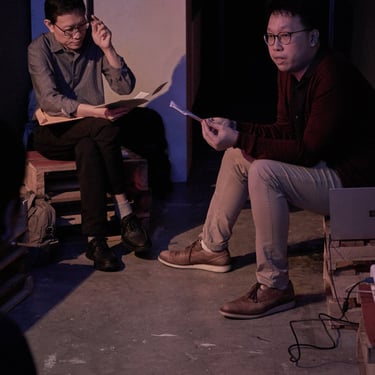
Glimpses.
Sad Kids.
